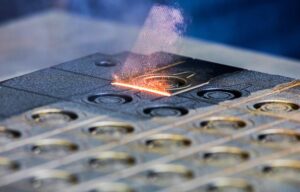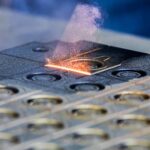 The complexity and importance of cleaning requirements in industries where cleanliness is important and where the precision of the tools is critical are not effectively addressed by traditional cleaning methods. This is where laser cleaning comes in – a relatively new concept that is transforming the way surface cleaning, contamination management, and equipment maintenance are done.From industries where aircraft and automobiles are being produced to social services that require delicate laser graffiti removal, the technology is steadily growing popular due to its accuracy, efficiency, and non-toxicity. But what makes the laser cleaning so different – and so effective? This article will explore how laser cleaning works and why it is safe for precise instruments.
The complexity and importance of cleaning requirements in industries where cleanliness is important and where the precision of the tools is critical are not effectively addressed by traditional cleaning methods. This is where laser cleaning comes in – a relatively new concept that is transforming the way surface cleaning, contamination management, and equipment maintenance are done.From industries where aircraft and automobiles are being produced to social services that require delicate laser graffiti removal, the technology is steadily growing popular due to its accuracy, efficiency, and non-toxicity. But what makes the laser cleaning so different – and so effective? This article will explore how laser cleaning works and why it is safe for precise instruments.
Understanding Laser Cleaning
Laser cleaning is also based on the application of photothermal ablation that works in conjunction with laser radiation. A concentrated light beam is then aimed and projected onto the contaminated area, be it dirt, rust, paint, oil, or any substance of that nature. These contaminants do not interact with the laser in the same way as the base material does, which leads to them being heated, vaporized, or removed through a process known as sublimation or plasma production.
In its operation, the laser’s wavelength and energy or power can be regulated, with standards of precision ensuring that only the layers to be eliminated are targeted. This is in contrast to abrasive processes where there is friction – or, more specifically, direct contact – and that can scrape or damage the delicate parts.
Why Laser Cleaning Is Safer for Precision Equipment
In any application where highly valuable or particularly fragile equipment is being used, there is no room for error or injury-prone accidents. On this note, let us unveil why laser cleaning has a competitive edge over conventional welding methods:
1.Non-Abrasive and Contact-Free
Anytime you have an object as small as a coin, which is a significant component of a jet or a microchip assembly line, it has to be handled with care. Some of the conventional approaches, which are scraping or blasting, can bring about pitting, surface stress, or even microscopic injuries. However, laser cleaning uses light, not force, which makes mechanical interferences impossible.
2.Highly Selective Removal
Due to the flexibility of the laser type (wavelength, pulse durations, and energy density), contaminants can be selectively ablated without damaging the substrate. This explains why laser cleaning works well with equipment that has protective coatings, composites, or precision dimensions.
3. Environmentally Responsible
The general use of lasers in cleaning organic and inorganic deposits makes the use of harsh solvents and toxic chemicals redundant, which are potentially hazardous to both the equipment and human beings and the environment as well. It gives off little or no waste – may be in the form of fine dust or fume, and these are easily eliminated using filtration systems.
4.Precise, Programmable Control
Laser systems, now available, can be scaled and controlled by computers; they are efficient for repetitive cleaning operations. This eliminates bias, which is crucial, especially when it comes to compliance or quality assurance setups.
5.Minimal Downtime
The cleaning method is dry and leaves no residues behind or requires subsequent operations; thus, companies experience less time-consuming cleaning schedules. This is because it ensures that operations continue as planned and does not cause businesses to incur additional expenses due to time spent waiting for equipment repair or replacement.
Contact laser cleaners Today!
Laser cleaning as a surface maintenance technology is faster than conventional methods of cleaning. Its accuracy, non-toxicity, and lack of impact on delicate components make it ideal for organizations that are out to offer the best and durable services to their clients. Whether it is cleaning automotive manufacturing conveyor belt lines or refurbishing historic buildings, laser cleaning is a superior solution.






Leave a Reply
You must be logged in to post a comment.